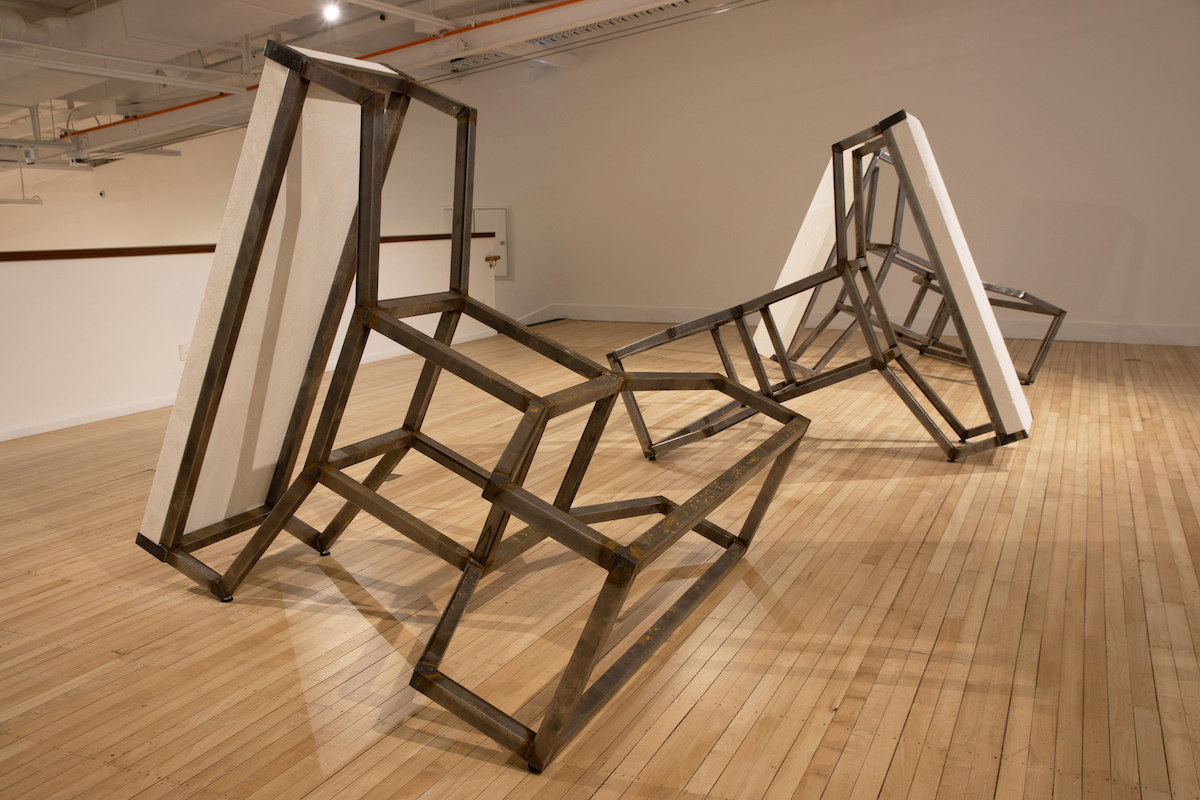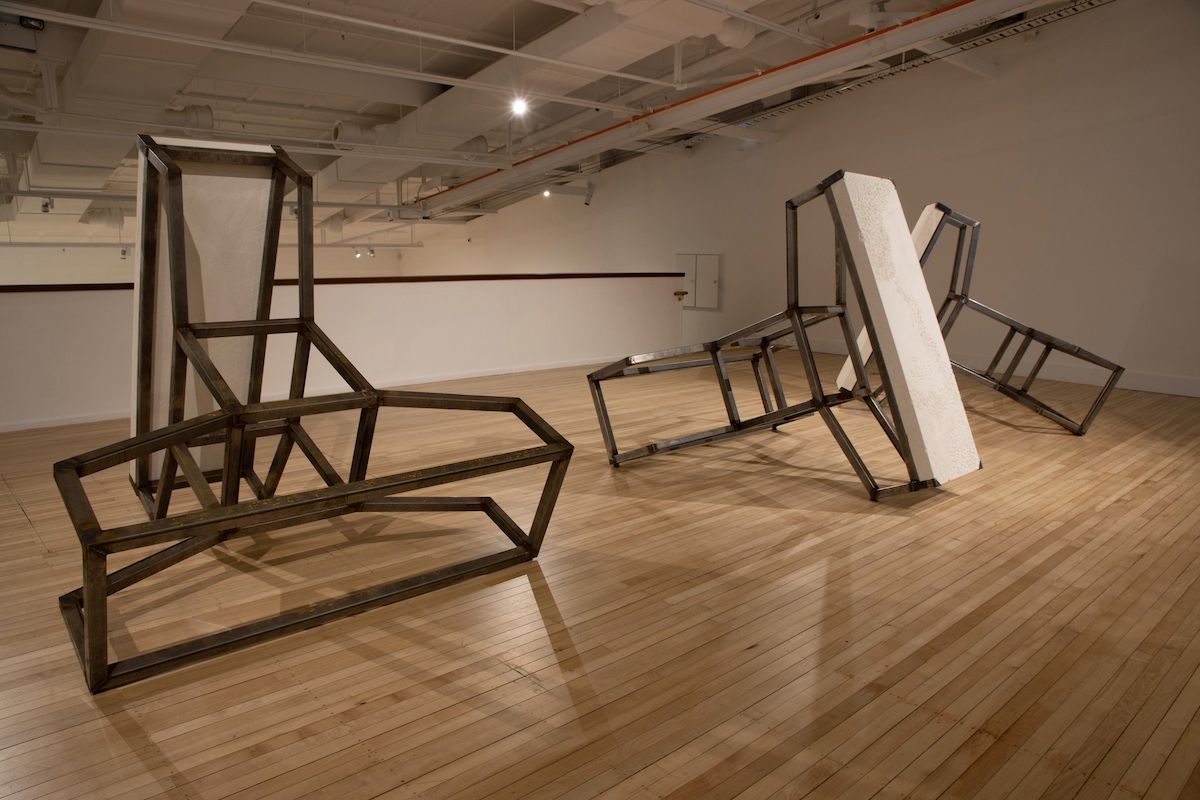THE WOMAN
WHOSE BACK WAS A WHETSTONE
Exhibited in Swallowing Geography, Govett Brewster Art Gallery, Ngāmotu New Plymouth, curated by Megan Tamati-Quennell (group show)
I am thinking of the gallery as a body, the roof arches on an upward angle like a back and these three sculptures are arranged in the space so that they resemble the vertebrae of a spine. [1]
This installation, which includes sculptures based on akmon forms – the concrete blocks used at the breakwaters of port Taranaki – references the atua wāhine or female deity Hine-tua-hōanga. In Māori creation stories, Hine-tua-hōanga is the granddaughter of Tāwhaki, who climbed to the heavens to gain knowledge. She is also the sister of Rata, who cut down a tree to create a waka, but after he failed to say the right karakia or prayer, the insects returned to the tree to its original state. As an atua, she is described as ‘the woman who stands as a grindstone’ or as titled here, ‘the woman whose back was a whetstone’. Her body is the surface against which tools can be sharpened, a process that creates ‘a tension that shapes and transforms, but also has the capacity to damage.'[2] These practices Ana Iti interprets as ‘a kind of friction which parallels colonisation and industrialisation in Aotearoa and includes Māori displacement and alienation from land.’[3]
For this work Ana defined Hine-tua-hōanga as the atua of sculpture because of the deity’s connection with materials such as rock, clay and sand, and the processes of casting, carving and moulding. The limestone or Oamaru stone used on the face of the three sculptures –modular repetitions of each other – reference the South Island story of limestone being the remnants of Hine-tua-hōanga’s bones. The limestone in this installation has been subject to three ‘actions’ devised by Ana. Each action emulates a sculptural practice but also a process associated with Hine-tua-hōanga. One limestone surface has been sanded to form pounding surfaces, one has been incised, and the final surface, channels for sharpening toki have been enacted.
- Megan Tamati-Quenell, Associate Indigenous Curator Contemporary Art, Govett Brewster Art Gallery
[1] Ana Iti, op. cit.
[2] Ibid
[3] Ibid
Steel,
Oamaru limestone
Photography by Bryan James and Hayley Bethell
Photography by Bryan James and Hayley Bethell


